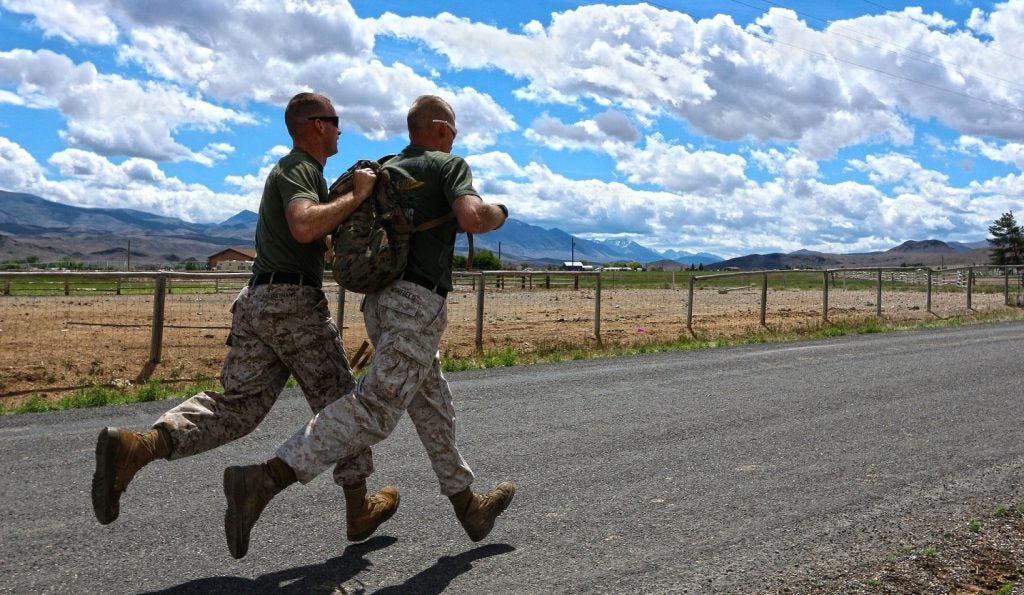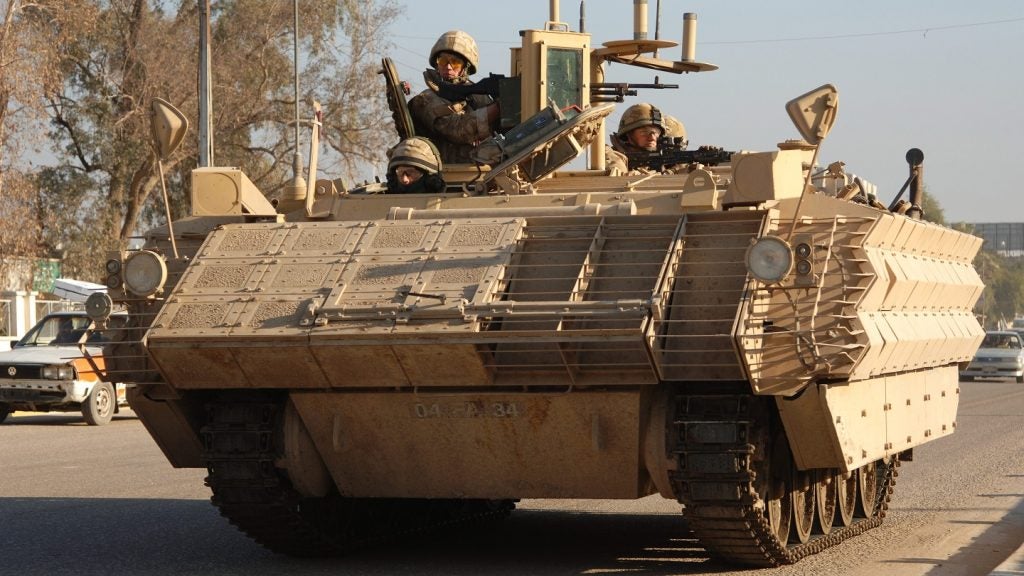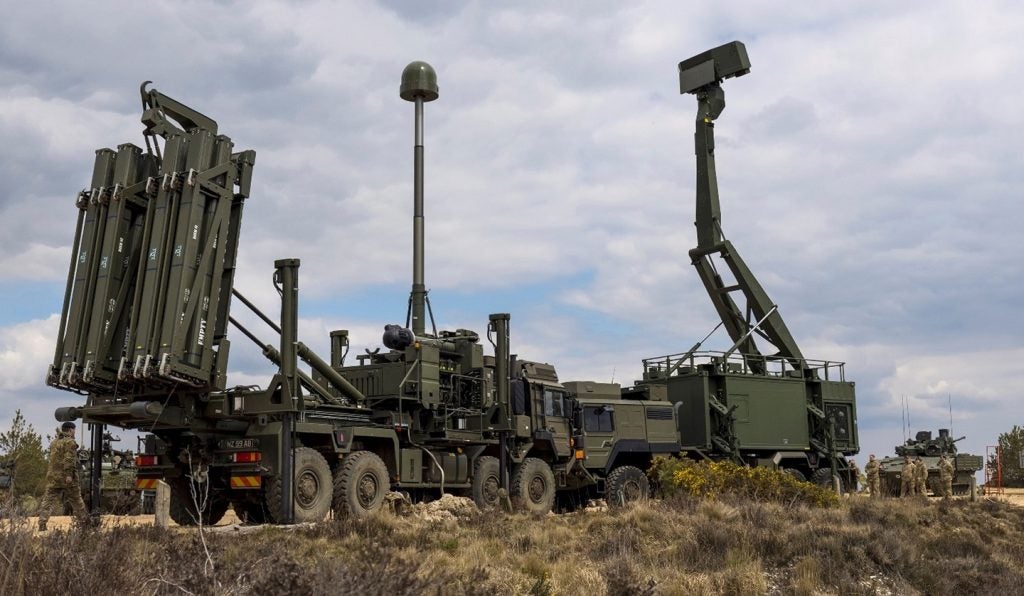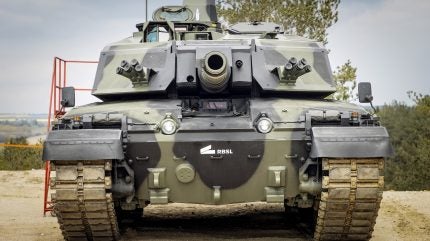
As the British Army sought to address a number of obsolescence issues and modernise its vehicle fleets, attention turned to the venerable, but ageing, Challenger 2 main battle tank (MBT), in service since 1998 and in need of either an upgrade or outright replacement.
Most problematic of all was the uniqueness of the Challenger 2s main gun, a rifled L30A1 that no other force in Nato operated. The solution was the find a way to bring into service the Rheinmetall’s L55A1 120mm smoothbore gun that has become ubiquitous throughout the Alliance.
How well do you really know your competitors?
Access the most comprehensive Company Profiles on the market, powered by GlobalData. Save hours of research. Gain competitive edge.

Thank you!
Your download email will arrive shortly
Not ready to buy yet? Download a free sample
We are confident about the unique quality of our Company Profiles. However, we want you to make the most beneficial decision for your business, so we offer a free sample that you can download by submitting the below form
By GlobalDataIn May 2021, Rheinmetall BAE Systems Land (RBSL), was awarded an £800m ($995.9m) contract by the UK Ministry of Defence (MoD) to upgrade 148 Challenger 3 (CR3) MBTs for the British Army.
The contract also attracted a £40m inward investment in RBSL’s Telford facility, utilising a UK supply chain that includes companies in the West Midlands, Glasgow, Newcastle upon Tyne, and the Isle of Wight.
The latest development, announced on 18 April 2024, by the UK MoD, has seen the latest of eight prototypes roll of the RBSL factory production line in Telford. With the first prototype already undergoing trials, the UK MoD states that all will be tested under operational conditions to “validate their performance and make refinements”, before another 140 of built and delivered to the British Army.
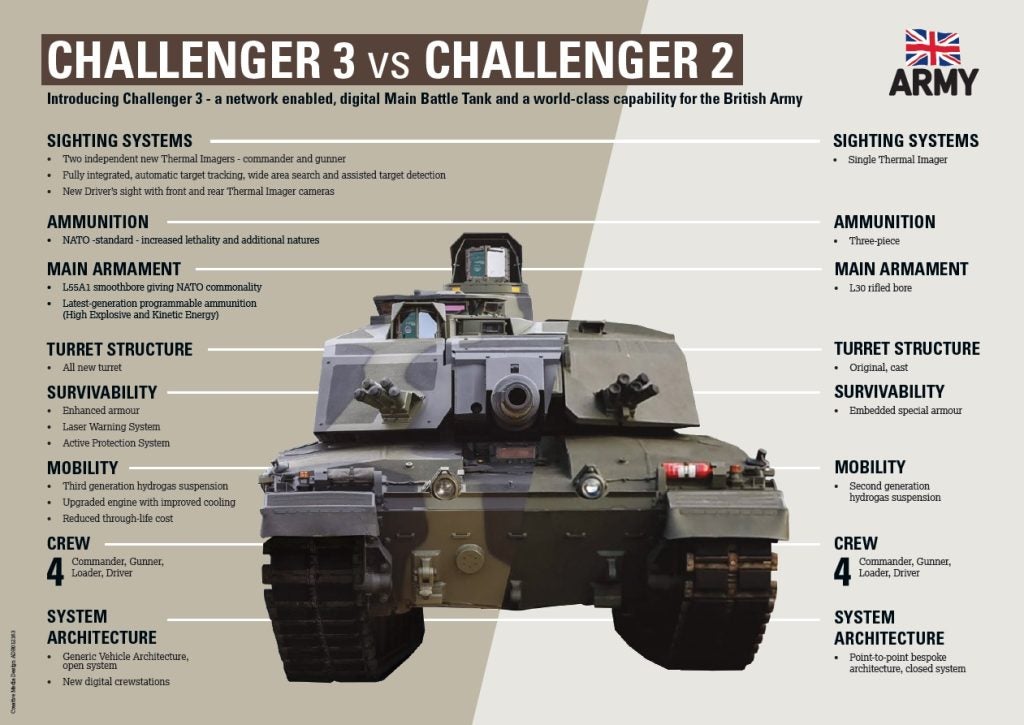
The Challenger 3 is intended to remain in service “until at least 2040”, with the upgrade, in addition to the main gun and its subsequent compatibility with Nato ammunition, including improved armour and sensors. Initial operating capability is expected in 2027, while full operating capability is scheduled to be reached in 2030.
Remarking on the latest step of the CR3 programme, UK Defence Secretary, Grant Shapps, said: “In a more dangerous world, the need for vehicles such as the Challenger 3 is imperative, as the threats facing the UK evolve. This tank will be at the heart of the British Army’s warfighting capabilities and will be integral to the UK’s deterrence.”
While the temptation would perhaps have been opting for new MBTs on the open market, such as the US M1A2 SEPv3 or the latest European Leopard 2, a combination of cost, timelines, and capability requirements meant that an upgrade of the Challenger 2 was always the most likely decision.
However, with just 148 contracted to be upgraded, from a theoretical 227 vehicles in the existing fleet, it represents a medium-term drop in tank numbers. While there has been consideration to increasing this number, the 227 Challenger 2 fleet size is also being challenged, with many vehicles thought to be unable to undertake operations.
Will a lack of a depleted uranium round reduce lethality?
In terms of lethality, the Rheinmetall L55A1 120mm smoothbore gun will provide commonality within Nato, enabling a sharing of ammunition and supply requirements and bringing it up to Alliance standards. However, a significant reduction in lethality will be seen with the loss of a depleted uranium ammunition capability, as is currently available for the rifled L30A1 main gun.
According to a UK Parliament note from 2001 on the use of depleted uranium (DU) in tank ammunition, the rounds have a 10-20% greater penetration than Tungsten and considered to be easier to manufacture than Tungsten alloy.
However, established potential health risks associated with the use of depleted uranium rounds have also likely been a factor, particularly for operators of tanks struck by DU rounds, which was established could lead to levels of DU in the kidney (4ppm) that exceed toxicity thresholds and result in a maximum whole body radiation dose (40-48mSv) outside the UK annual occupational radiation limit (20 mSv/year).
Overall, this can be seen as taking one step forward with the introduction of a smoothbore weapon system and subsequent commonality with European Nato countries, and a step back with the loss of a depleted uranium round. Such ammunition has an extremely high density and kill probability when used against heavy armour.
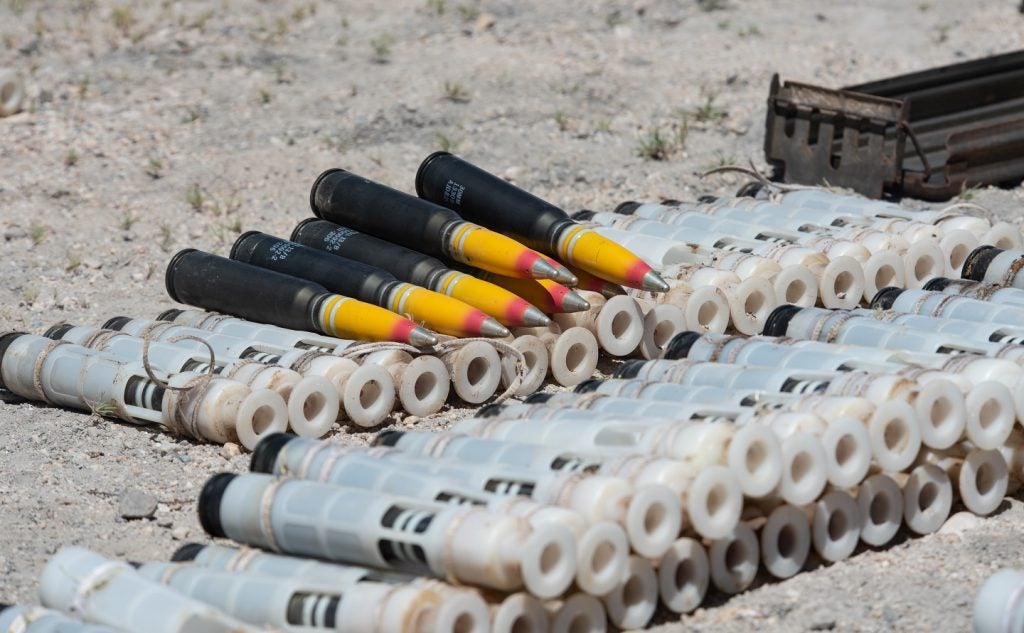
However, in April 2023 the UK signed an agreement with Germany to begin work on the next phase in the development of more lethal ammunition for the Challenger 3, with the UK MoD’s Defence Equipment and Support work on new armour-piercing tank ammunition centering on the Enhanced Kinetic Energy (EKE) round, intended to provide a “step change” to British Army lethality.
In order to reach the armour penetration levels reached by DU, Tungsten-derived rounds have to travel at higher speeds than existing tank ammunition, indicating a potential research path that the UK and Germany could be pursuing with the EKE capability.
The other main upgrade to the Challenger 2 to create the Challenger 3 variant is the new turret to house the Rheinmetall main gun, which introduces new and improved sensors across the spectrum to aid in battlefield awareness and capability. The current Challenger 2 turret featured to composite second generation Chobham armour, a type likely continuing into the Challenger 3, with a new “modular armour” structure also under development.
A new ‘next generation’, or bringing it up to peer competition?
In terms of capabilities the upgrades to the Challenger 2, introducing a new turret, sensor suite, passive and active armour, and power pack, represent the most significant tank modernisation programme undertaken by the UK MoD for decades.
What Challenger 3 does is bring the UK’s MBT game back to a level playing field with allies and expected competitors, cherry picking some of the main features of modern MBTs such as active protection systems, smoothbore main guns, and enhanced battlefield awareness resulting from extensive sensor suites.
By no means ‘next-generation’ platform, the Challenger 3 keep the British Army’s MBT capability relevant for the next 15-20 years, at which point one could expect to see UK-built, foreign designs, introduced into service, possibly the platforms similar to the ongoing Abrams X US concept or European Main Ground Combat Systems programme.
Additional reporting from John Hill.


